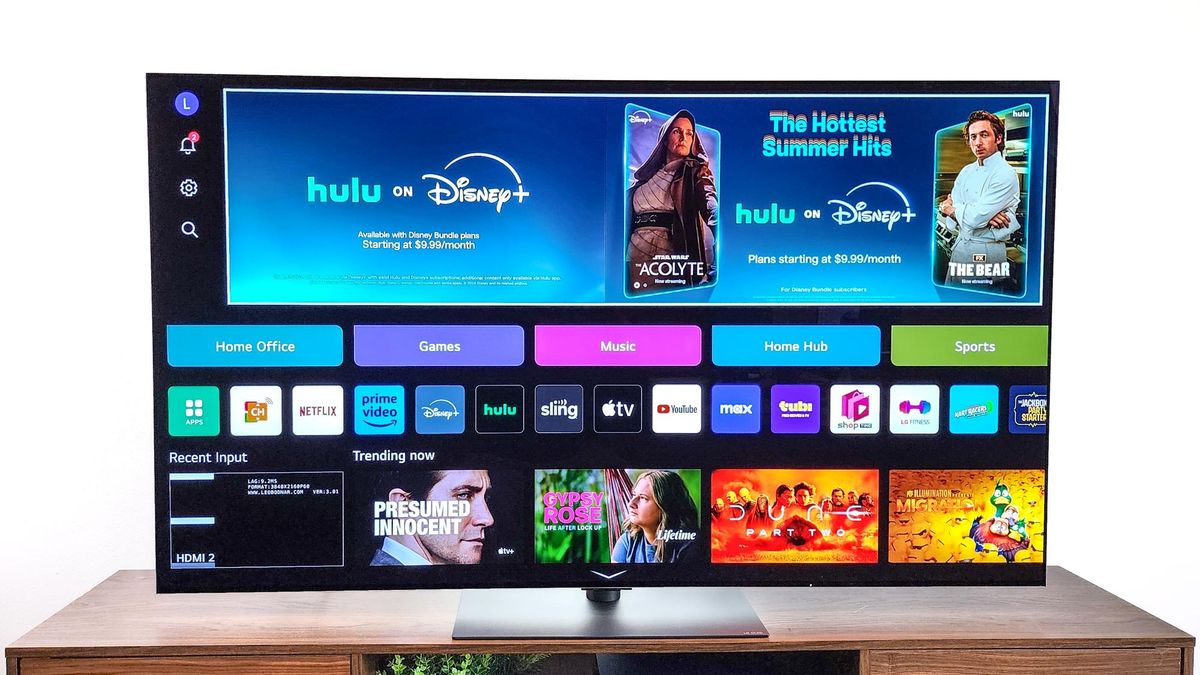It should go without saying, but earning a spot on our list of the best TVs isn’t easy. A TV must compete against several dozen contenders in more than 10 different categories such as color saturation, color accuracy, brightness, contrast, motion handling and more.
Over the past few years, the top spot has been taken over by some really great TVs like the LG C3 OLED, Samsung QN90C, Sony A95K OLED and, currently, the Hisense U8N. But according to our latest lab tests, the crown may return to LG with the LG G4 OLED.
We recently put the G4 OLED through our testing process and its results are extremely impressive. It has the best color accuracy and vibrancy of any TV we’ve ever tested, and thanks to its LG Display META 2.0 OLED panel with micro-lens array technology, it delivers mini-LED levels of brightness.
We’ll still have to see how the TV holds up in an everyday viewing environment, but based on the lab results, it looks like the LG G4 OLED is a contender for the best TV of 2024.
LG G4 OLED test data compared
| LG G4 OLED | Samsung S95D OLED | Sony Bravia 9 | |
| SDR brightness (10%, in nits) | 358.47 | 276.05 | 498.16 |
| Delta-E (lower is better) | 1.4041 | 3.5085 | 1.7971 |
| Rec. 709 Gamut Coverage | 133.26% | 99.80% | 99.16% |
| HDR brightness (10%, in nits) | 1487.61 | 1777.15 | 2554.87 |
| UHDA-P3 range coverage | 97.29% | 99.97% | 95.32% |
| Rec. 2020 Gamut Coverage | 72.91% | 89.73% | 78.02% |
| Input Latency (ms) | 9.2 | 9.2 | 17.1 |
What you’re looking at here is the LG G4 OLED against two flagship TVs from Samsung and Sony, namely the Samsung S94D OLED and the Sony Bravia 9 Mini-LED. These are, in my professional opinion, the three best performing TVs of 2024 – and you can see how close the competition is between the three.
What stands out to me, looking at the test data, is the LG G4’s color saturation, SDR brightness, and out-of-the-box color accuracy.
What stands out to me, looking at the test data, is the LG G4’s color saturation, SDR brightness, and out-of-the-box color accuracy. HDR brightness is a category that will always be won by mini-LED TVs (although we’re not taking credit for Samsung’s QD-OLED flagship here for putting out such a high number), but the G4’s 1,487.61 nits is more than double of what we saw from the LG G-Series three years ago.
What this should prove to you is that LG Display’s MLA technology is the real thing. Yes, Mini-LED and QD-OLED are still brighter, but they are making trade-offs in either color accuracy or contrast. The G4 OLED is the middle ground that should deliver high brightness, good contrast and high color saturation.
So, will the LG G4 OLED be the best TV of 2024?

If you’ve read one of our many, many TV reviews before, you’ll know that our lab tests play a big part in how well a TV scores, but they’re not everything. We still look at half a dozen other factors like the usability of the smart platform, the sound quality of the TV’s built-in speakers, motion processing and zoom accuracy, and game performance along with small details like the design of the remote control.
We also consider price-performance ratio when deciding which TV deserves the crown as the best TV – not everyone has several hundred thousand dollars for MicroLED TVs, so we only give the award to TVs with a realistic sticker price.
Based on all these factors, however, I think Samsung and Sony have every reason to be concerned about the G4 OLED. We’ll have to continue our anecdotal testing before making any final decisions, but our test data shows that the G4 OLED has what it takes to take the top spot.
Stay tuned for the full LG G4 OLED review, posted right here next week.